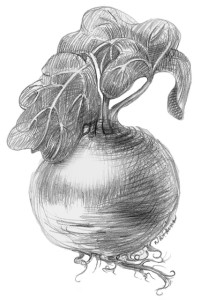Through The Garden Gate
October
By Leslie Watkins
”How beautifully leaves grow old. How full of light and color are their last days.” –John Burroughs
Shorter days, colder nights and here is autumn. By day, glorious warm colors blanket the trees and fields. Russets, burgundies and gold mixed with spots of bright scarlet thrill us, but the night comes on fast and wood smoke is comforting.
Witches, alchemists and gardeners have a lot in common: “Eye of newt, and toe of frog/Wool of bat, and tongue of dog/Adder’s fork, and blind-worm’s sting/Lizard’s leg, and howlet’s wing…”
In this spell cast by the witches in Macbeth, some of gardeners’ favorite companions are conjured– the creepy crawlers; worms, spiders, centipedes and toads, and the night fliers; owls, bats and whip-poor-wills. These are the things that knit together the light and the dark and bring balance. The definition of magic is transformation, so what better time of year to celebrate it?
At the end of the growing season the verdure of summer transforms into blazing fall foliage, and harvest time is here. October is the month of gathering crops. In the garden is winter squash, pumpkins, beans, beets, carrots, turnips and potatoes. Old cucumbers left on the vine are hard and orange now, ready to be harvested for next year’s seeds. Flower seeds can be sprinkled around from poppies, larkspur, cleome, columbine, nicotiana and digitalis. Seeds from morning glories, nasturtiums, and sunflowers may be saved in paper envelopes marked with their name and collection date. Once thoroughly dry, store seeds in a plastic or glass container with a tight fitting lid somewhere cool and not overly dry.
A thorough fall clean-up will greatly reduce the amount of overwintering pests and diseases. Pick up fallen fruit from under apple trees and feed it to the chickens. Remove stalks and leaves from the cabbage patch, broccoli and squash to prevent re-infestation. Put tomato and potato remains and carefully raked rose leaves on the burn pile to kill fungus spores. Prune infested viburnums to remove the egg cases of the viburnum leaf beetle (their burrows can be found on the underside of twigs in grooves and they can be burned, too).
Plant garlic cloves two-inches deep, every six-inches, in rows 12 inches apart. Cover liberally with shredded straw. Spinach, mustard greens and mache (corn salad) may be planted in October under floating row cover for April harvest. Start planting spring bulbs like daffodils, muscari, crocus, scilla, and fritillaria.
Celtic legend tells us of Stingy Jack, who agreed to have a drink with the devil in exchange for his soul. When the devil shape-shifted into a coin to pay for the drink, Jack trapped him in his pocket by placing it next to a silver cross. When Jack died, God wouldn’t have him in heaven and the devil wouldn’t have him in hell, so he roamed the eternal night with a carved rutabaga lantern to light the way. He became known as “Jack of the Lantern”. Pumpkin jack o’lanterns are an American innovation on the harder to carve rutabagas, but you can carve your own traditional rutabaga lantern using a curved wood gouge. Add a grotesque face representing a spirit of the dead to help frighten Stingy Jack away from your house.
October Chore Checklist
- Take down and scrub out birdhouses.
- Put up bird feeders and fill with seed.
- Rake leaves into piles and add to compost.
- Collect and dry seeds, store in paper envelopes.
- Put Rosemary plants in sunny spots in cold rooms.
- Remove ground coverings to hinder vole activity.
- Push in guide stakes for the snowplow.
- Put up wind guards around the bee yard.
- Install mouse guards on the entrances of hives.
- Put up deer fencing.

